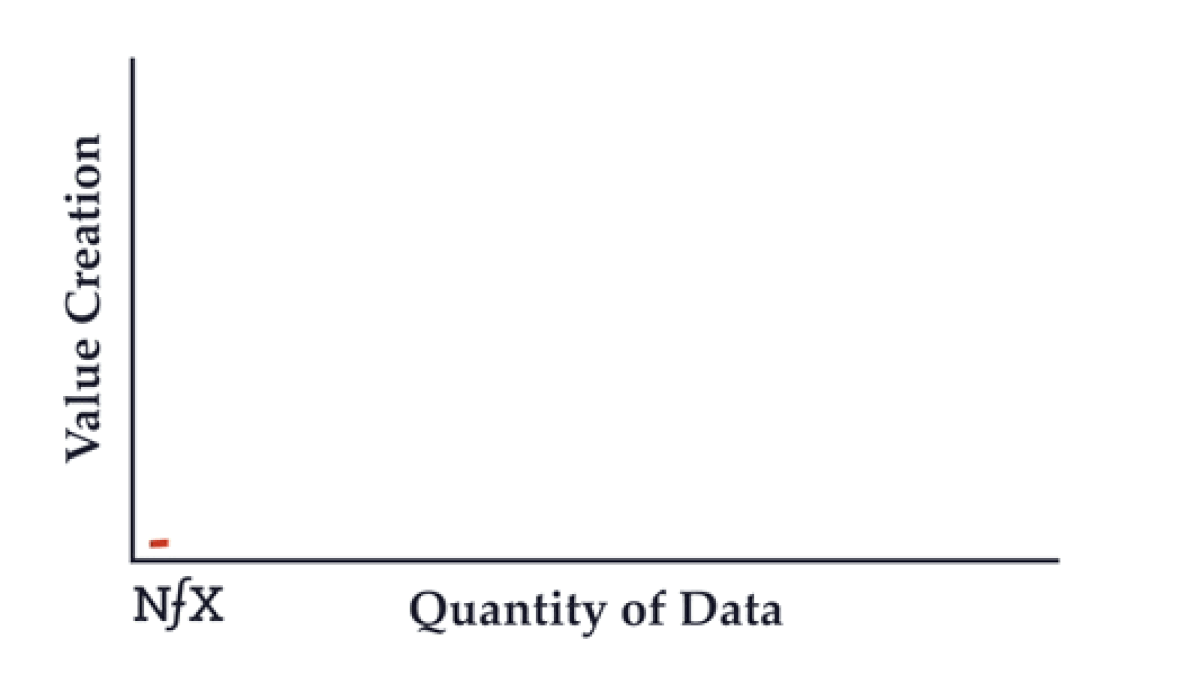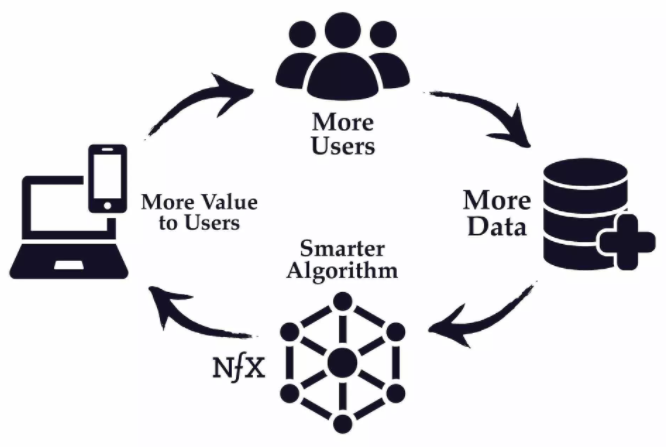What Makes Data Valuable: The Truth About Data Network Effects
Source: https://www.nfx.com/post/truth-about-data-network-effects/

Data is not inherently valuable. Most data doesn’t produce a real data network effect, and most data network effects aren’t that powerful even once established.
Building a truly iconic company is about building true defensibility.
3 Broad Approaches to Making Data Valuable
- Data Network Effects
- product’s value grows as a result of more usage via the accretion of data
- highly valuable, very rare
- Data Scale
- Next best thing to Network effects because scale effects are linear and asymptote quickly, while network effects are nonlinear and create increasing returns.
- Eg. The scale of data with Yelp (number of restaurants and local businesses it covers) and Amazon (breadth of products) makes it hard for a new competitor to challenge them
- Caution: Data is NOT an ongoing insight engine.
- In practice, most of the valuable insights you will glean from a scaled-up dataset in a particular domain will come early on. More data just confirms those insights.
- Further, the number of insights that will matter enough for customers to pay you or choose me over other providers is typically small.
- So data scale can give you these early 1-3 key insights, but I typically need to develop other aspects of my defensibility to build an important company.
- Data Embedding
- Data embedding is the idea that by holding more and more of my clients’/users’ data, the harder I am to remove, and that gives me some defensibility.
- This is NOT a network effect because the value the clients get from me working with the other clients is typically a small part of the value I provide and is not the reason clients would stay with me.
- The greater part of my value is that the more data I hold for them embedded in their operations, the harder it would be to remove me. That gives me defensibility.
6 elements of Data Network Effects

- Constant Data Capture from customer usage (may or may not be automatic)
- Be on a “data treadmill”.
- i.e. Collect and create value from data that is constantly changing and old data is not very valuable.
- The data treadmill gives the company defensibility from competitors.

- Real network effects are flywheels that lead to runaway value creation. Best not to constrain that flywheel with manual effort in your operations.
- Be on a “data treadmill”.
- Product value should increase automatically as more data is added
- Captued data should result in increased value for existing users, thereby completing the positive feedback loop that drives a data network effect.
- This has to be automatic and continuous for a true data network effect.
- Collecting data to make product improvements or finding insights is a manual and periodic process and they get harder to find over time. Thus they’re not network effects.
- High threshold for the amount of data needed before the product starts providing value. Provides a scale defensibility against competitors entering the market.
- Don’t overestimate how unique and valuable my dataset is.
- It’s often the case that competitors can get similar, but different, sometimes even smaller datasets to produce similar value in their product.
- Double check that I have real threshold defensibility:
- dataset size
- value
- uniqueness
- Sign of a good network effect is when competitors find it hard to provide the same value without a similar size user base. This happens if the value of incremental data set doesn’t asymptote quickly (maybe because of the real-time nature of the service).


- Exception: Real-time data networks, applications of machine learning require enormous datasets.
- Real-time data network effects require a constant feed of data, which means that bigger networks of users have a big advantage over smaller networks. The corpus of data ages so quickly that it doesn’t have time to hit the point of diminishing returns — new data is always valuable.
- Search engines, for example, require enormous datasets.
- Value created by data is central to the product value.
- Peripheral data network effects like recommendation engines at Netflix are not powerful.
- Value created by data is perceived by the customer as valuable.
- Makes the product more defensible against competition.
Advice from James Currier
- James’ website Tickle created a structured dataset of 24 billion answers from 150 million users, but realized that the data was difficult to monetize.
- After two years of trying, clever use of the data made Tickle’s core products maybe 20% better. Even 40% better doesn’t typically move the needle in growth or in defensibility against competitors.
- In a world of abundant data, it’s getting harder to differentiate on the basis of data quantity alone.
- Make sure to understand the methods for creating real value with my data.
Mind Map: Coming Soon!